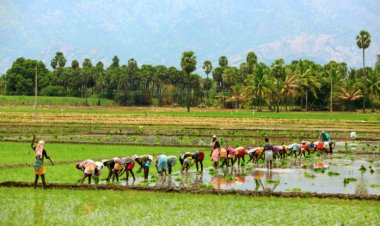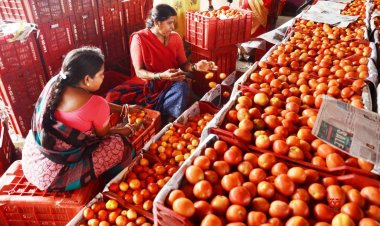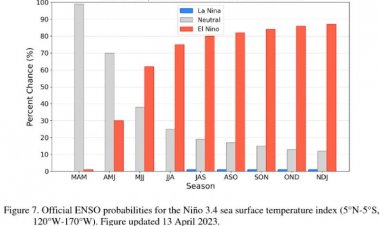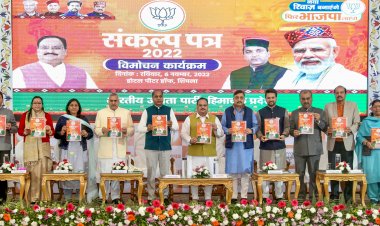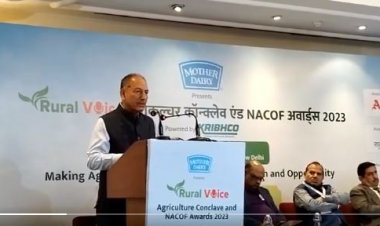Market prices low; farmers selling their gram at govt procurement centres only; MP raises ceiling for sale per farmer
The MSP for gram is Rs 5,230 per quintal. It is selling at Rs 4,300-Rs 4,825 per quintal at the mandis in Rajasthan. In Madhya Pradesh, it is selling at Rs 4,580-Rs 4,710 per quintal. In the mandis of Uttar Pradesh, however, one can see the gram prices rising. Gram is selling here at Rs 4,800-Rs 5,500.

The procurement of the Rabi crops, including wheat and gram, is going on at the Minimum Support Price (MSP) in most of the states in the country. Wheat and mustard farmers are reaching the procurement centres in smaller numbers as they are getting prices in the market above MSP. But gram farmers are selling their produce at government procurement centres only because gram is selling at below MSP at other places.
The MSP for gram is Rs 5,230 per quintal. It is selling at Rs 4,300-Rs 4,825 per quintal at the mandis in Rajasthan. In Madhya Pradesh (MP), it is selling at Rs 4,580-Rs 4,710 per quintal. In the mandis of Uttar Pradesh (UP), however, one can see the gram prices rising. Gram is selling here at Rs 4,800-Rs 5,500.
Subhash Patil, a farmer from the Gulai village in Burhanpur district of MP, had grown the crop of gram on an area of 35 acres. He got a yield of eight quintals per acre on average. He said, “The prevailing rate in the market is Rs 4,500 per quintal at present. So, we are selling (our produce) at government procurement centres, as they are purchasing at Rs 5,230 per quintal.”
Thus, farmers in MP are selling their produce of gram at government procurement centres rather than in mandis. But one farmer was allowed there to sell only a maximum of 25 quintals of gram in a day. The farmer bought 40 quintals of gram in his trolley but he had to take 15 quintals back due to the 25-quintal ceiling. In light of the protests from the farmers on the issue, the state government of MP has now decided to raise the ceiling to 40 quintals of gram per day for a farmer.
Subhash Patil said, “It costs us about 20 to 25 thousand to grow gram over one acre. We had hoped that the crop of gram would fetch us better prices but that has not happened. So, the government should increase the MSP of gram so that farmers can make profits. Only then will farmers grow gram.”
The acreage for gram has gone up by 4.57 lakh hectares as compared to last year. Gram was grown over 110.38 lakh hectares last year while the acreage this year went up to 114.95 lakh hectares. A record production of 1.31 crore tonnes of gram is estimated this year (in 2021-22). The production stood at 1.19 crore tonnes in 2020-21. In fact, in view of the steep rise in the prices of pulses last year, farmers had cultivated more gram this year.
Last year, the government had come up with various sanctions on gram in order to curb the rising prices of pulses. Imports of arhar, urad and moong were allowed in the “open category” from 15 May 2021 to 31 October 2021. Subsequently, the open arrangement for the import of arhar and urad was extended till 31 March 2022.
Last year in December, in order to curb the increase in the pulses of prices, the Securities and Exchange Board of India (SEBI) had imposed some sanctions on gram trade on the National Commodity and Derivatives Exchange (NCDEX) and excluded gram from forward trading. More than 60 per cent of the pulses in the country are produced during the Rabi season only. Gram has a share of about 40 per cent in the total pulse production. Tur (arhar) comes next at 15 to 20 per cent.
India is the largest producer, consumer and importer of pulses. It contributes about 24 per cent to the global production of pulses. Its share is about 27 per cent in global consumption and 14 per cent in imports. The production of pulses in the country has gone up from 1.4 crore tonnes to 2.4 crore tonnes over the last 5-6 years.
If the farmers are not compensated fairly for the pulses they produce, they will sow less of pulse crops. It is estimated that the annual requirement of pulses will reach about 3.2 crore tonnes by the year 2050.












